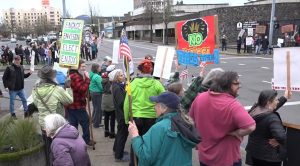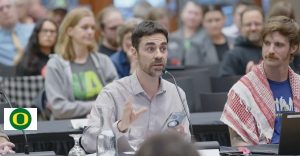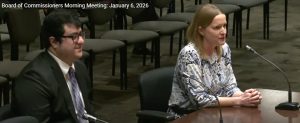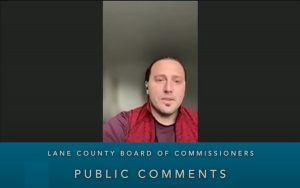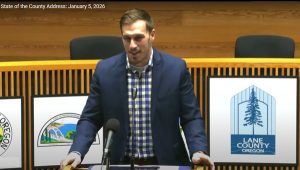It’s official: River Road EmX opponents saved taxpayers $71 million
11 min read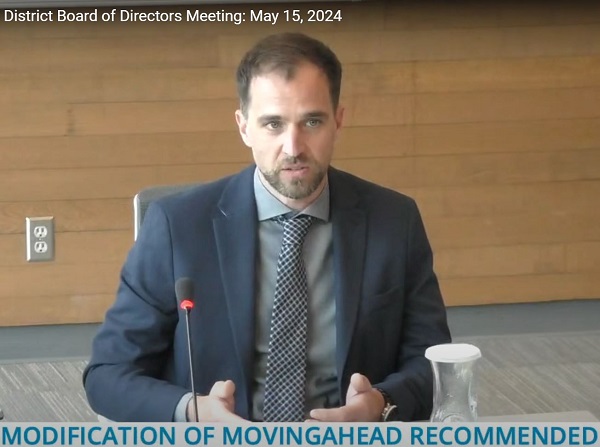
LTD drops plans for Emerald Express bus rapid transit on River Road. On May 15, the Lane Transit District board officially dropped EmX as its locally preferred alternative. Staff members had previously explained the change to the Strategic Planning Committee. On March 26:
Pat Walsh (Chief Marketing Officer): As most of you know, about a year or more (ago), LTD and the city of Eugene pushed pause on EmX on River Road. And during that time what we did is we went back and we evaluated the situation… We got into the finances of that project, which have gone up almost 40% since 2016 when we started on EmX as part of the MovingAhead project.
[00:00:44] We also have seen a drastic dip in ridership. That’s through the pandemic. Prior to the pandemic, we had about 10 million boardings a year, now we’re at about six million, maybe a little bit more than that. Well, we expect to have more by the end of the fiscal year, but that’s where we are.
[00:01:01] So as we were looking at that and we were listening to the community in terms of what we were trying to solve out on River Road, we came to the conclusion that probably right now, EmX on River Road is not the best option for us.
[00:01:19] Claire Syrett (Strategic Planning Committee member, March 26, 2024): So this is Claire Syrett, and I’m just going to put it out there in case you’re not aware. I was a Eugene city councilor for 10 years, and I was removed from office by a recall that was inspired by the fact that LTD and the city of Eugene made a decision to pursue the idea of bus rapid transit on River Road which is a major corridor in the ward that I represented. So I just want that to be out there on the record for everyone…
[00:01:50] Obviously this could seem like a kind of personal switch to me and Jameson did do me the courtesy of reaching out to me prior to this meeting, so I wasn’t caught by surprise.
[00:02:00] And, you know, I’m no longer an elected representative, but when I was, I mean, I recognized and I even told some of the folks who were so upset, like, the future might change, right? Like, shovels hadn’t hit the dirt. And there was a lot that could have happened between the vote that the city of Eugene and LTD took around those decisions to lead to a different outcome.
[00:02:28] And so, you know, I think it’s eminently reasonable and proper that the agency and the city of Eugene should make this reconsideration given the facts that you all have access to and to prioritize the needs for safer transit along that corridor for everyone and do that within a way that’s fiscally responsible and, you know, makes sense for the agency and the city. So I appreciate that very much.
[00:03:04] Jameson Auten (LTD CEO, March 26, 2024): This isn’t an easy decision. You know, when I think about this, I think about what Claire said. You know, I think about her, she was one of the early phone calls or conversations I had when I got to Eugene. And I want to, I want to reframe it just a bit. I think that—
[00:03:20] Claire Syrett (March 26, 2024): Before you even arrived, Jameson, you reached out.
[00:03:24] Jameson Auten (LTD CEO, March 26, 2024): I’m sorry, Claire. I just felt so bad. The—I think that the goal of what we’re trying to achieve along that corridor and along all of our corridors is the same. I think we want to increase mobility options. We want to increase safety. It’s just the function in which we choose to do it.
[00:03:45] And I think that this is part of, you know: How do we reallocate resources, whether it’s staff time or federal dollars or because there’s this misconception that federal dollars are from somewhere else. They’re all tax dollars. And when we build these capital projects, they turn (into) operational budgets over the years.
[00:04:05] So we’ve got to be really cognizant of the fact that: How do we serve Eugene-Springfield in ways that are the most impactful, and not just from a ridership number, but from an opportunity standpoint as well.
[00:04:22] When I look at the Route 11, which is our highest local ridership route, and I look who’s riding it, I was talking to the Springfield school superintendent last week. It’s his kids. His kids are. So wouldn’t it be cool if the kids that ride the Route 11 are able to run the company when they’re ready? Or the kids that ride the 51 or 52 are able to run the company when they’re ready, because we’re providing that access in ways that they need to use?
[00:04:52] We’re looking at: How do we serve Coburg better? How do we serve our southern portion of Lane County better? And they’re all different solutions. You know, we got an email recently about a housing project and we hear about workforce housing, the need for that. We got an email over the last two days about a housing project coming in the Springfield community. And their primary concern is: How do we connect transit to this to make it successful?
[00:05:20] So I think looking at the priorities around the region and how they are translated in the work that we do is critical. So I just wanted to put that out there, that I want to reframe this differently, Claire, in that MovingAhead is going to catapult us into understanding what the real potential of our community can actually be and how we realize that with the community.
[00:05:48] John Q: Launching the discussion at the board meeting May 15:
[00:05:52] Jameson Auten (LTD CEO, May 15, 2024): We looked at it from the viewpoint of what does this investment mean to the community in terms of ridership. We also looked at it from the standpoint of: What does this investment cost the community? Not in 2016 dollars, but in 2024-25 dollars.
[00:06:10] So we looked at this and then we even backed up and we looked at how are we communicating with our communities. I think that was a part of what feedback that we heard was, you know, with so many different things competing for our time and attention.
[00:06:24] You know, this project started in ʻ16 and people move in, move out and pandemic happens and it resulted in what it resulted in, for multiple reasons. But that aside, we looked at it and we feel that there are ways that we can serve that part of our city that are less intrusive, that are less capital-heavy.
[00:06:47] As you know, when we do capital projects, the costs don’t end at the start. There’s ongoing maintenance costs as we go on. And that creates a commitment from general fund. And quite frankly, the old economic guns and butter debate on, you know, you can’t have both. You have to invest in the things that impact the best. So we took a look at that.
[00:07:08] But I do want to share on record that this is important work. The work’s not minimized. The need is the same, but today there are different ways of providing for that need, and different parts of our community need different things, and being able to understand what’s needed now, not just (20)24, but beyond with the way we live. And to your previous question: How are people interacting with the service and what kind of services are people expecting? And how do we deliver those?
[00:07:38] So that’s what we’ve taken a look at. So I wanted to kind of frame it that way and then let Dave kind of walk through what we found.
[00:07:45] John Q: With the retirement of Tom Schwetz, the new planning director, Dave Roth.
[00:07:50] Dave Roth (LTD, director of mobility planning and policy): My name is Dave Roth. I’m the new director of mobility planning and policy. I’m here tonight seeking board action on a proposed resolution that would modify the locally preferred alternative (or LPA) for River Road from a full EmX buildout to an enhanced corridor suite of improvements.
[00:08:07] I’ll provide some background on the process that resulted in the conceptual plan. The MovingAhead process began back in 2015 as a partnership between city of Eugene, LTD, regional agencies and Eugene-Springfield community. Over the course of several years, the MovingAhead project studied a range of potential transit investments designed to improve safety access, travel time, reliability, and speed and to support greater frequency on these five corridors.
[00:08:35] And these are five high-growth areas within Eugene that need transit to support that growth. So, a robust community engagement process and technical analysis resulted in conceptual plans or locally preferred alternatives for these five corridors. So we had: EmX on River Road; enhanced corridor on Highway 99; 30th Avenue out to LCC was determined to be a no-build at that time; Coburg Road, enhanced corridor; and then also enhanced corridor on MLK Jr. (Boulevard).
[00:09:08] So, these corridor-level conceptual plans still today provide LTD and the city of Eugene with a strong planning and analytical foundation for future work, specifically in a scenario where federal funding is required. The work done—the technical analysis and engagement on MovingAhead—prepares each agency to initiate the NEPA process if we’re going to utilize federal dollars on those projects on those corridors.
[00:09:36] But it’s worth noting that no formal NEPA action had been taken. We just sort of got ourselves queued up for that process for future corridor work. So, MovingAhead, and the recommended LPA for each of the five corridors, was taken through a formal adoption process with the first being adopted by city of Eugene back in March, early March of 2022 and the LTD board followed just a few days later on March 16 of ʻ22. And then shortly thereafter by the MPC, Metropolitan Planning Commission, on May 5 of ʻ22.
[00:10:11] However, at the same time, at least partially driven by the global pandemic, the impacts of dramatically increasing material and labor costs were just starting to emerge. And this is something that was happening to agencies everywhere, but on capital projects—so every agency planning and delivering capital projects has been impacted, with the result being scope reductions and often delayed or canceled projects, projects being pushed out just because the costs have increased so much.
[00:10:44] So the financial calculus for MovingAhead, and in particular, the proposal for a full EmX corridor on River Road has changed.
[00:10:51] MovingAhead projected the River Road EmX project to cost $78 million in 2016 dollars. To build the same project in 2025, which, you know, roughly, maybe the date you might expect a project to start on River Road, would be a 32% increase at $103 million. Further, any grant opportunity that would fund a new EmX corridor requires a matching contribution from LTD’s operating funds. Given that we have limited operating dollars, those limited operating dollars might be better spent elsewhere on the fixed network…
[00:11:31] As with capital project cost inflation, we’ve also seen significant changes—that is specifically reductions in ridership that do alter the MovingAhead’s benefit-cost ratio. So, thinking about the benefit you get up from these investments in terms of future ridership.
[00:11:48] So, ridership projections utilized in MovingAhead analysis were calculated prior to the pandemic and suggested that we would have seen with the EmX investments on River Road an increase in boardings of just under 2,000. But today, although we are increasing ridership coming out of the pandemic, it’s still lower by about 30% from when MovingAhead did that analysis. So the ridership projections have changed for that type of an investment.
[00:12:18] So these factors, combined with evolving community expectations for public services delivery across the community, required that we re-evaluate the project proposal for River Road.
[00:12:30] And so the proposal that staff are bringing forward for your consideration tonight is to modify the (locally preferred alternative) LPA for River Road from an EmX corridor to the ‘enhanced corridor’ suite of investments.
[00:12:43] And so, what does that mean exactly? That means things like: features to improve reliability; reduce transit time; so we’re talking about transit signal prioritization; we’re talking about potentially business access and transit lanes in some locations; access improvements. So, improving people’s ability to get to the service in terms of improved pedestrian crossings, sidewalk improvements, bicycle improvements, those sorts of things.
[00:13:14] So, doing so, moving to the enhanced corridor would right-size LTD’s and the city of Eugene’s approach for needed transit investments on River Road. And it would continue to leverage the valuable planning and technical analysis of MovingAhead to deliver many of the benefits of bus rapid transit, but at a much reduced cost.
[00:13:37] At the time when the enhanced corridor alternative was looked at for River Road, the estimated cost in 2016 was $24 million. And if you apply the same increase of 32% or so, you’re looking at about $31.6, $31.7 million for the suite of improvements. And I should also mention that the approach to how those would be implemented is something that we’ve not determined yet.
[00:14:04] We have been having conversations with our partners at the city of Eugene. And we’re just starting these conversations about what a future project might look like. And so that would be if you applied all of the improvements at once. And I don’t know that we’re at a point where we could say that that’s the approach that we would take. You might take a more incremental approach, which would result or involve smaller projects over time.
[00:14:28] So, it remains to be seen what that would look like.
[00:14:34] Gino Grimaldi (LTD Board of Directors, president): What will the public see next? What’s the next event?
[00:14:40] Dave Roth (LTD, director of mobility planning and policy): Yeah, great question. So, as I mentioned, we’ve been having conversations with our counterparts at the city and they’re anxiously anticipating tonight’s meeting. And so I’ll be providing a report back after tonight, but I’ll follow up with city staff, my counterparts there, and it does sound like they’ll be bringing this to city council sometime in June… seeking approval to basically follow our lead on this one. And then I believe at some point, we will go back to the MPC (Metropolitan Policy Committee) to bring forward a joint presentation with city staff to the MPC. And then there’s a lot of work to do for project development. So we would be re-engaging with stakeholders, the community on this one, to determine our next steps.
[00:15:25] John Q: It turns out that’s exactly what the people of Eugene were asking for all along. In July 2022:
[00:15:34] Mark Osterloh (Civic activist, July 2022): You should take note of this. Doing a recall is an extraordinary thing. What we want you to do is reverse that vote on the EmX bus line and the whole MovingAhead and let’s go back to square one. Let’s get citizen input. Let’s see what the people want and not just the people that are pushing this, which are the bus manufacturers, road construction people. This is about us. This is not about them.
[00:15:57] John Q: With LTD’s decision this week, it becomes official: The people who stood against River Road EmX just saved (in construction costs alone) the difference between $103 million for EmX and $32 million for the enhanced corridor.
[00:16:12] It took time, but working within the system, collecting signatures on petitions, speaking out and voting, a small group of local residents just saved us all $71 million.
See also: EmX decision does not represent a savings for taxpayers
